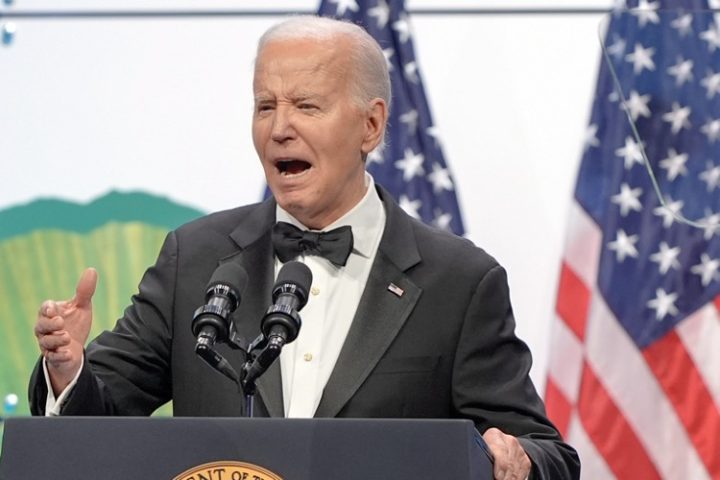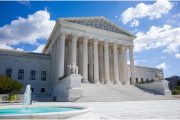
The Federal Reserve Bank of San Francisco (FRBSF) just published a report demolishing President Joe Biden’s claim that corporate greed is responsible for the inflation that has dogged the economy throughout his presidency and now threatens his reelection.
The FRBSF Economic Letter issued Monday finds that corporate price markups “have stayed essentially flat since the start of the [post-Covid] recovery.” In other words, contra Biden, companies have not been inordinately raising their prices, even when “shrinkflation” is taken into account.
Biden, of course, has every reason to try to shift responsibility for persistent price inflation to the private sector. The Consumer Price Index hit nine percent in June 2022 and has never fallen below three percent since. The Producer Price Index, which tracks businesses’ costs, has followed a similar pattern.
Voters increasingly blame Biden for the country’s economic woes even as he boasts of presiding over “the best economy in the world.” A recent Financial Times-University of Michigan poll found that 58 percent of voters disapprove of Biden’s handling of the economy, and 49 percent think his policies have hurt the economy. Forty-three percent of those same voters trust former President Donald Trump to handle the economy versus 35 percent who trust Biden.
However, when it comes to high prices, Biden is plainly wrong to point the finger at corporations, according to FRBSF.
“What factors have been driving the ups and downs of inflation?” the bank asks.
Production costs are traditionally considered a main contributor, particularly costs stemming from fluctuations in demand for and supply of goods and services. As demand for their products rises, companies need to hire more workers and buy more intermediate goods, pushing up production costs. Supply chain disruptions can also push up the cost of production. Firms may pass on all or part of the cost increases to consumers by raising prices.
Demand did rise during the pandemic and the post-pandemic recovery period — but why? With millions thrown out of work and businesses shuttered, many permanently, one would expect demand to drop dramatically. FRBSF hints at its own part in bringing about this counterintuitive scenario:
To support households and businesses during the pandemic, the Federal Reserve lowered the federal funds rate target to essentially zero, and the federal government provided large fiscal transfers and increased unemployment benefits. These policies boosted demand for goods and services, especially as the economy recovered from the depth of the pandemic.
The increase in overall demand, combined with supply shortages, boosted the costs of production, contributing to the surge in inflation during the post-pandemic recovery.
In short, if the government had not first caused the economic disruptions and then, aided by the Fed, cranked out trillions of dollars to try to undo the damage, Americans would not be suffering seemingly unrelenting price hikes.
Did businesses take advantage of soaring demand to pad their own pocketbooks? Not according to FRBSF. “As demand for goods surged early in the post-pandemic recovery, companies may have had a greater ability to raise their prices above their production costs, a gap known as markups,” the bank writes. Yet while “growth of nonfinancial corporate profits accelerated in the early part of the recovery,” the “increase in corporate profits is not particularly pronounced compared with previous recoveries.” Instead, “much of the recent rise in corporate profits can be attributed to lower business taxes and higher subsidies from pandemic-related government support, as well as lower net interest payments due to monetary policy accommodation.” Again, the Biden-headed government, which cranked out a $1.9-trillion “stimulus” law and a $750-billion Inflation Reduction Act, enabled by the Fed, which kept interest rates low and bought much of the debt the government issued to finance its spending spree, bear a significant amount of responsibility for corporations’ recent record profits.
What about those markups? “Theory suggests that companies set prices as a markup over variable production costs, and that markup can be inferred from the share of a firm’s revenue spent on a given variable production factor, such as labor or intermediate goods,” reads the report. “If the share of a firm’s revenue used for inputs falls, it would imply a rise in the firm’s price-cost margin or markup.”
FRBSF reviewed the changes in markups in various industries beginning in the third quarter of 2020 using data from the Bureau of Economic Analysis that “takes into account changes in product characteristics (for instance, size) that could otherwise bias the inflation measure by comparing the prices of inherently different products over time.”
The bank’s conclusion: “Markups did rise substantially in a few important sectors, such as motor vehicles and petroleum products. However, aggregate markups — the more relevant measure for overall inflation — have stayed essentially flat since the start of the recovery,” as in previous recoveries, despite the significant increase in consumer prices during that period. “As such, rising markups have not been a main driver of the recent surge and subsequent decline in inflation during the current recovery.”
In other words, companies aren’t gouging consumers. They’re simply responding to government policies that have increased the money supply and, therefore, consumer demand well beyond that which would be expected after the calamitous Covid interventions.
The evidence for this must be overwhelming for the Fed to admit it. But don’t expect Biden to stop pushing the false notion that “greedflation,” not his (and, to be fair, some of Trump’s) policies, is behind Americans’ shrinking standard of living.



